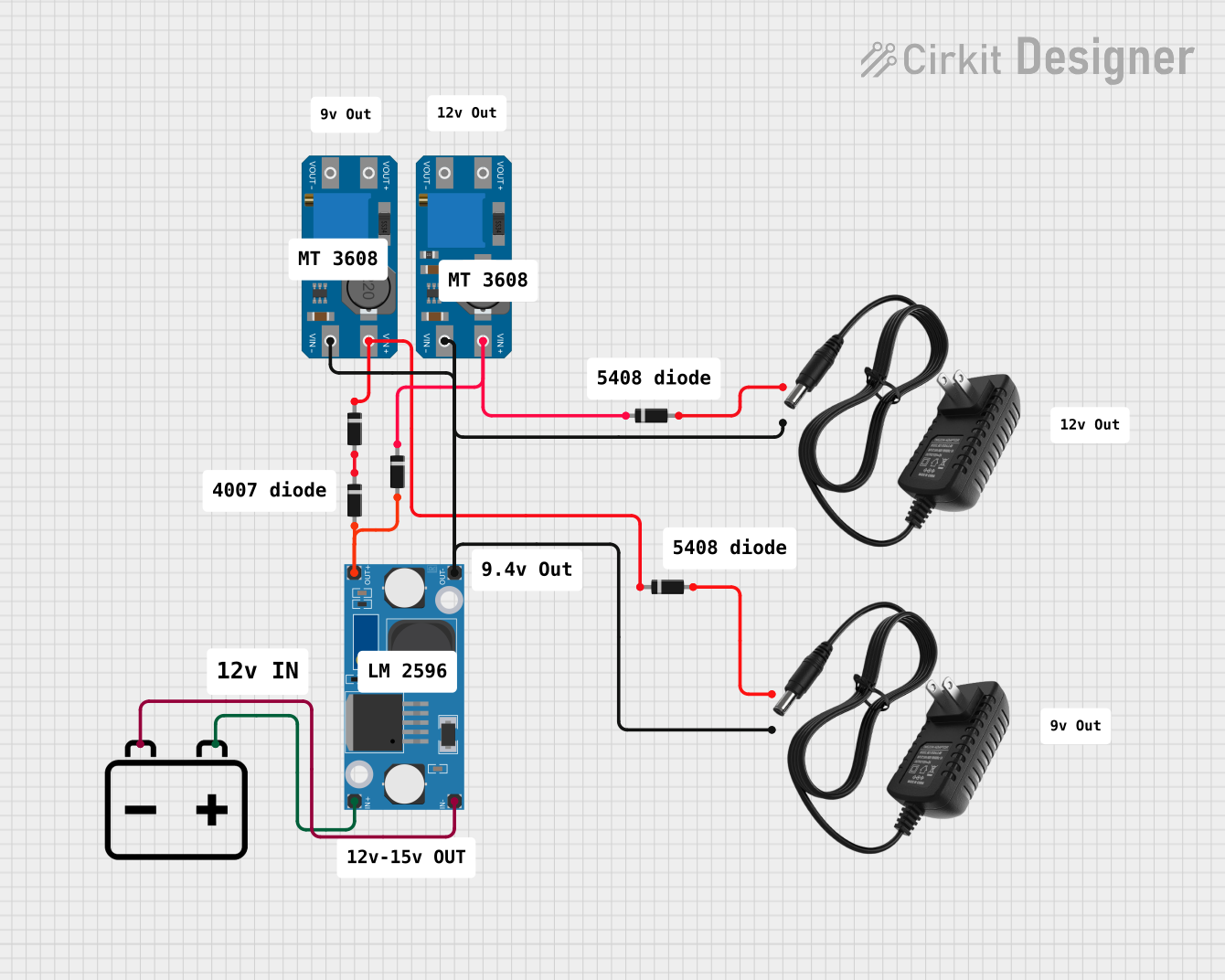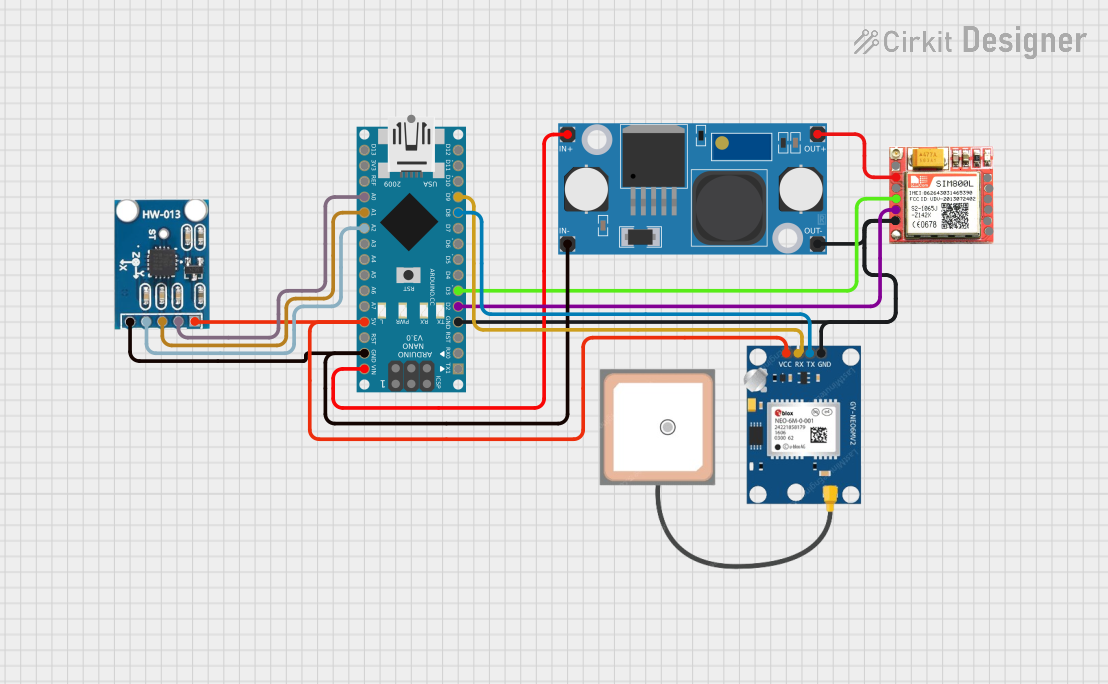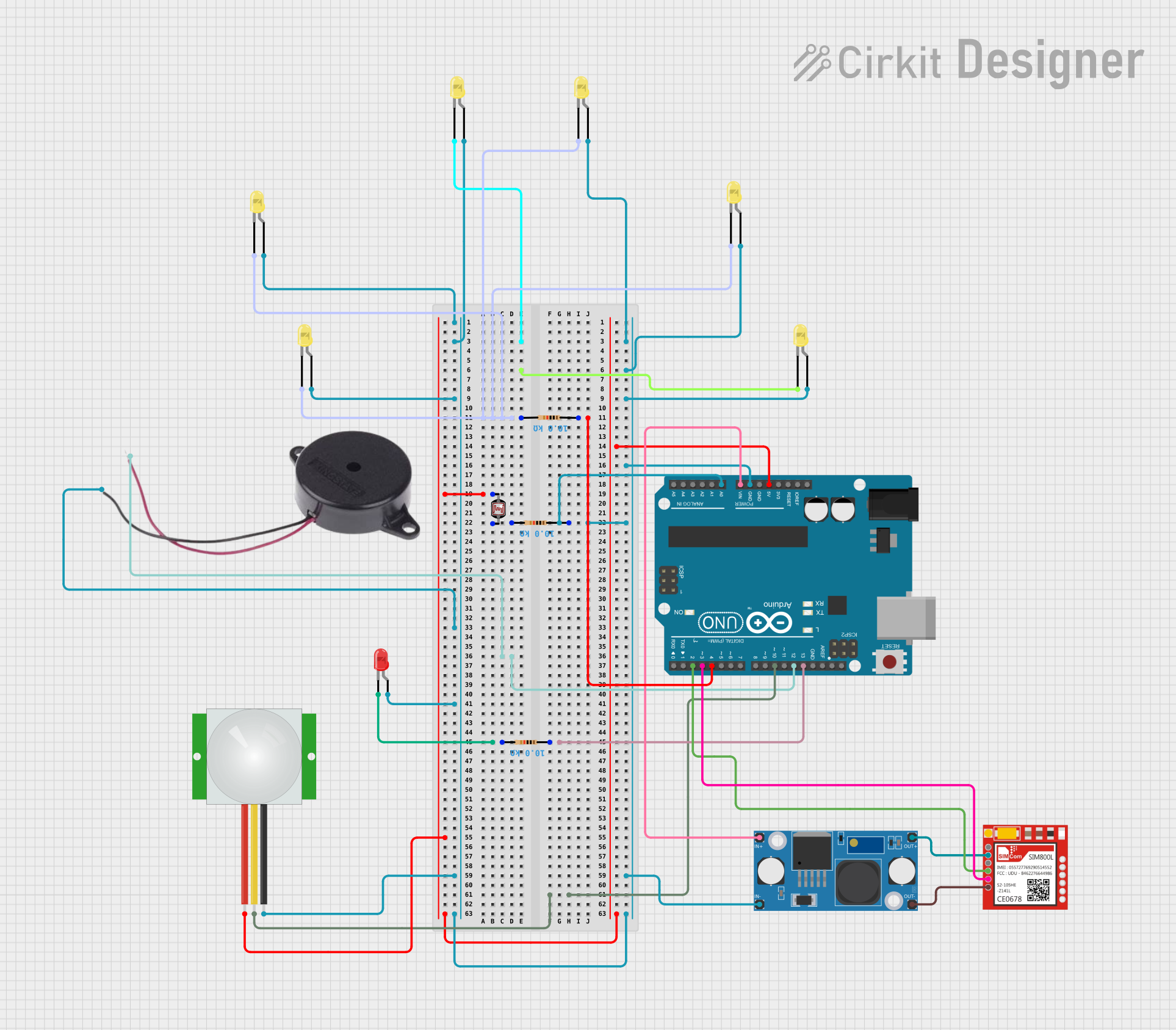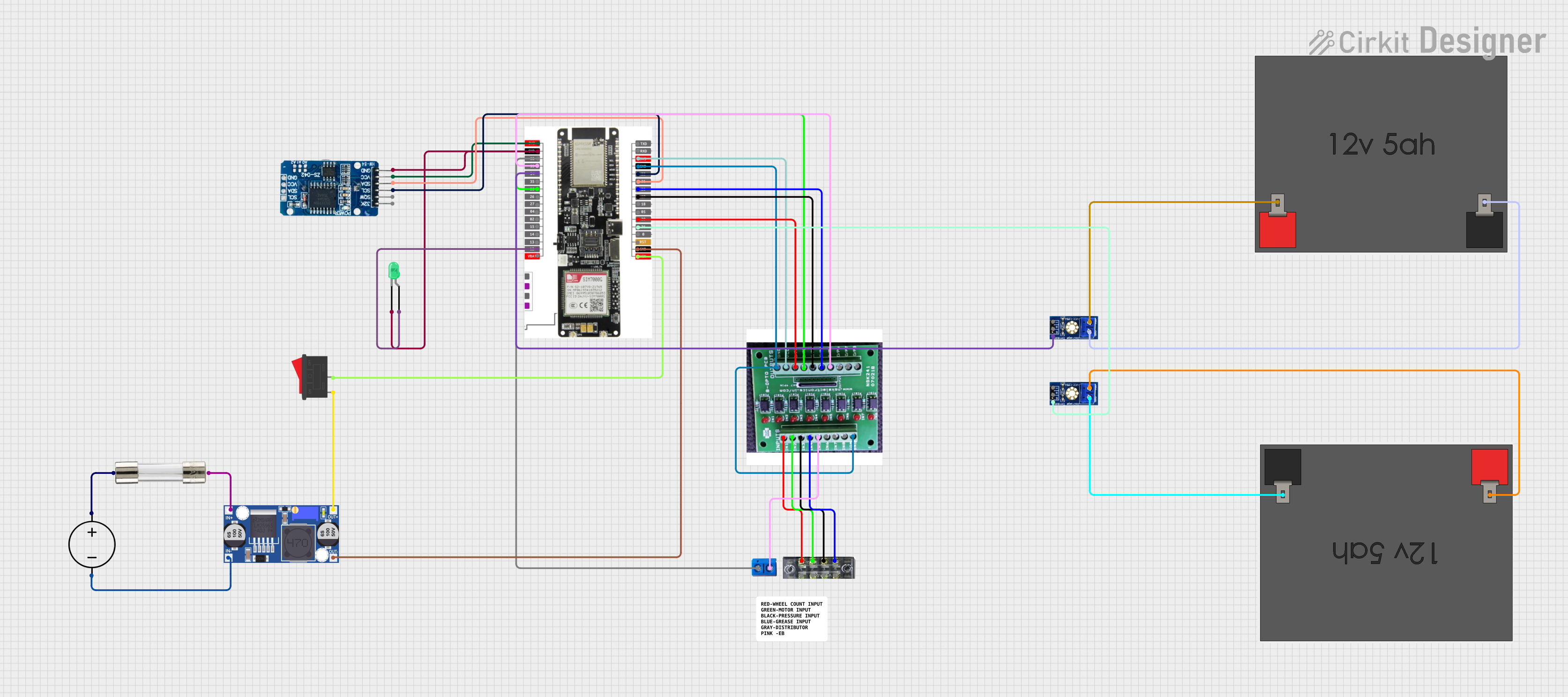
How to Use lm2596: Examples, Pinouts, and Specs

 Design with lm2596 in Cirkit Designer
Design with lm2596 in Cirkit DesignerIntroduction
The LM2596 is a step-down (buck) voltage regulator designed to efficiently convert a higher input voltage into a stable, regulated output voltage. It is capable of delivering up to 3A of output current, making it ideal for powering a wide range of electronic devices. With its wide input voltage range (typically 4.5V to 40V), the LM2596 is a versatile component for power management in various applications.
Explore Projects Built with lm2596

 Open Project in Cirkit Designer
Open Project in Cirkit Designer
 Open Project in Cirkit Designer
Open Project in Cirkit Designer
 Open Project in Cirkit Designer
Open Project in Cirkit Designer
 Open Project in Cirkit Designer
Open Project in Cirkit DesignerExplore Projects Built with lm2596

 Open Project in Cirkit Designer
Open Project in Cirkit Designer
 Open Project in Cirkit Designer
Open Project in Cirkit Designer
 Open Project in Cirkit Designer
Open Project in Cirkit Designer
 Open Project in Cirkit Designer
Open Project in Cirkit DesignerCommon Applications and Use Cases
- Power supply circuits for microcontrollers, sensors, and modules
- Battery-powered devices requiring efficient voltage regulation
- DC-DC converters in industrial and automotive systems
- Adjustable voltage regulators for prototyping and testing
- LED drivers and low-voltage lighting systems
Technical Specifications
The LM2596 is available in both fixed output voltage versions (e.g., 3.3V, 5V, 12V) and an adjustable version. Below are the key technical details:
Key Specifications
- Input Voltage Range: 4.5V to 40V
- Output Voltage Range: 1.23V to 37V (adjustable version)
- Output Current: Up to 3A
- Efficiency: Up to 90% (depending on input/output conditions)
- Switching Frequency: 150 kHz (typical)
- Thermal Shutdown: Yes
- Overcurrent Protection: Yes
- Package Type: TO-220 or TO-263 (commonly used)
Pin Configuration and Descriptions
The LM2596 typically comes in a 5-pin TO-220 or TO-263 package. Below is the pinout description:
| Pin Number | Pin Name | Description |
|---|---|---|
| 1 | VIN | Input voltage pin. Connect to the unregulated DC input voltage. |
| 2 | Output | Regulated output voltage pin. Connect to the load. |
| 3 | Ground (GND) | Ground pin. Connect to the circuit ground. |
| 4 | Feedback | Feedback pin. Used to set the output voltage (adjustable version only). |
| 5 | ON/OFF | Enable pin. Pull low to disable the regulator; leave open or pull high to enable. |
Usage Instructions
How to Use the LM2596 in a Circuit
- Input Voltage: Connect the input voltage (VIN) to the LM2596's VIN pin. Ensure the input voltage is within the specified range (4.5V to 40V).
- Output Voltage: For fixed versions, the output voltage is pre-set (e.g., 5V). For the adjustable version:
- Use a resistor divider network connected to the Feedback pin to set the desired output voltage.
- The output voltage can be calculated using the formula:
[ V_{OUT} = V_{REF} \times \left(1 + \frac{R1}{R2}\right) ]
where ( V_{REF} ) is typically 1.23V.
- Capacitors: Add input and output capacitors (e.g., 100µF electrolytic) to stabilize the circuit and reduce noise.
- Inductor: Select an appropriate inductor value based on the desired output current and voltage.
- Enable Pin: Leave the ON/OFF pin open or pull it high to enable the regulator. Pull it low to disable the output.
Important Considerations and Best Practices
- Heat Dissipation: The LM2596 can generate heat under high load conditions. Use a heatsink or ensure proper ventilation to prevent overheating.
- Input Voltage: Ensure the input voltage is at least 3V higher than the desired output voltage for proper regulation.
- Output Ripple: Use low-ESR capacitors to minimize output voltage ripple.
- PCB Layout: Keep the input and output capacitor connections as short as possible to reduce noise and improve stability.
Example: Using LM2596 with Arduino UNO
The LM2596 can be used to power an Arduino UNO by stepping down a 12V input to 5V. Below is an example circuit and Arduino code:
Circuit Connections
- Connect a 12V DC input to the VIN pin of the LM2596.
- Set the output voltage to 5V using the adjustable version of the LM2596.
- Connect the 5V output to the Arduino UNO's 5V pin.
- Connect the GND pin of the LM2596 to the Arduino's GND.
Arduino Code Example
// Example code to blink an LED using Arduino UNO powered by LM2596
// Ensure the LM2596 output is set to 5V before connecting to the Arduino
const int ledPin = 13; // Built-in LED pin on Arduino UNO
void setup() {
pinMode(ledPin, OUTPUT); // Set LED pin as output
}
void loop() {
digitalWrite(ledPin, HIGH); // Turn the LED on
delay(1000); // Wait for 1 second
digitalWrite(ledPin, LOW); // Turn the LED off
delay(1000); // Wait for 1 second
}
Troubleshooting and FAQs
Common Issues and Solutions
No Output Voltage:
- Check if the input voltage is within the specified range.
- Ensure the ON/OFF pin is not pulled low.
- Verify the connections and ensure the circuit is properly assembled.
Overheating:
- Ensure the load current does not exceed 3A.
- Use a heatsink or improve ventilation around the LM2596.
High Output Ripple:
- Use low-ESR capacitors on the input and output.
- Check the inductor value and ensure it is appropriate for the load.
Incorrect Output Voltage:
- For the adjustable version, verify the resistor divider values.
- Ensure the Feedback pin is properly connected.
FAQs
Can the LM2596 be used with batteries?
Yes, the LM2596 can step down the voltage from a battery to a lower, regulated voltage. Ensure the battery voltage is within the input range.What is the maximum input voltage for the LM2596?
The maximum input voltage is 40V. Exceeding this value may damage the component.Can the LM2596 be used for negative voltage regulation?
No, the LM2596 is designed for positive voltage regulation only.How do I calculate the inductor value?
Refer to the datasheet for detailed guidelines on selecting the inductor value based on the input/output voltage and load current.
By following this documentation, you can effectively use the LM2596 in your projects and troubleshoot common issues.